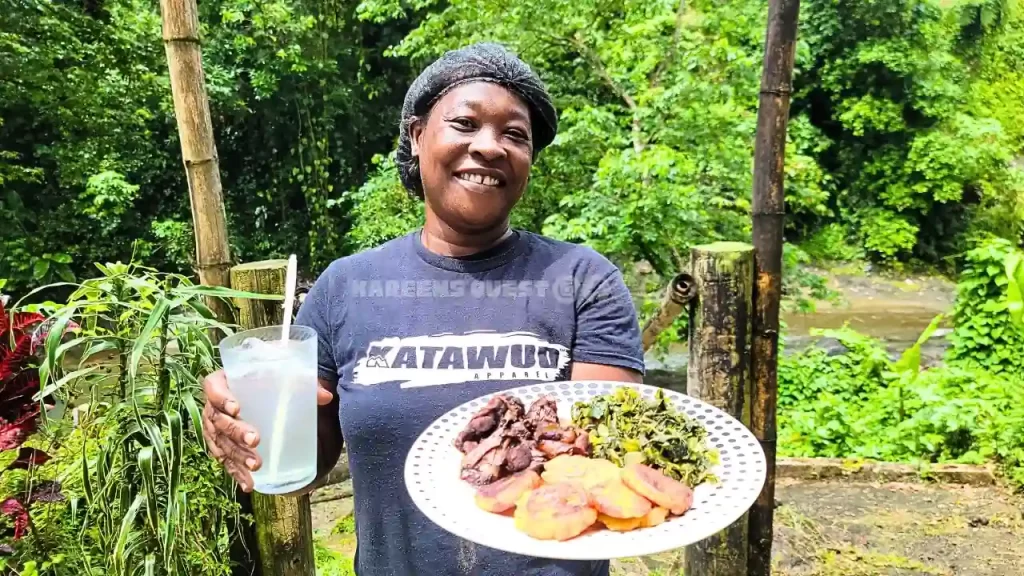The road to Ginger House, Portland, feels less like a journey and more like a descent into Jamaica’s rich cultural history. It’s a part of Portland that resonates deep within me, a place overflowing with stories and fierce independence. I’ve passed through these communities before – Comfort Castle, Mill Bank, Cornwall Barracks, Bowden Pen – on my way to Ambassabeth Eco Lodge, and each time, the feeling is the same: a profound connection to the land and its history. This particular stretch of Portland, where the Rio Grande river runs parallel to the communities, was a refuge for the Maroons, Jamaica’s first known freedom fighters. So when the opportunity arose to visit Katawud Village, a camping spot in the hills rooted in this very soil, I was eager to rekindle that bond with my ancestors.
Watch my full video of this Place at the bottom of the article
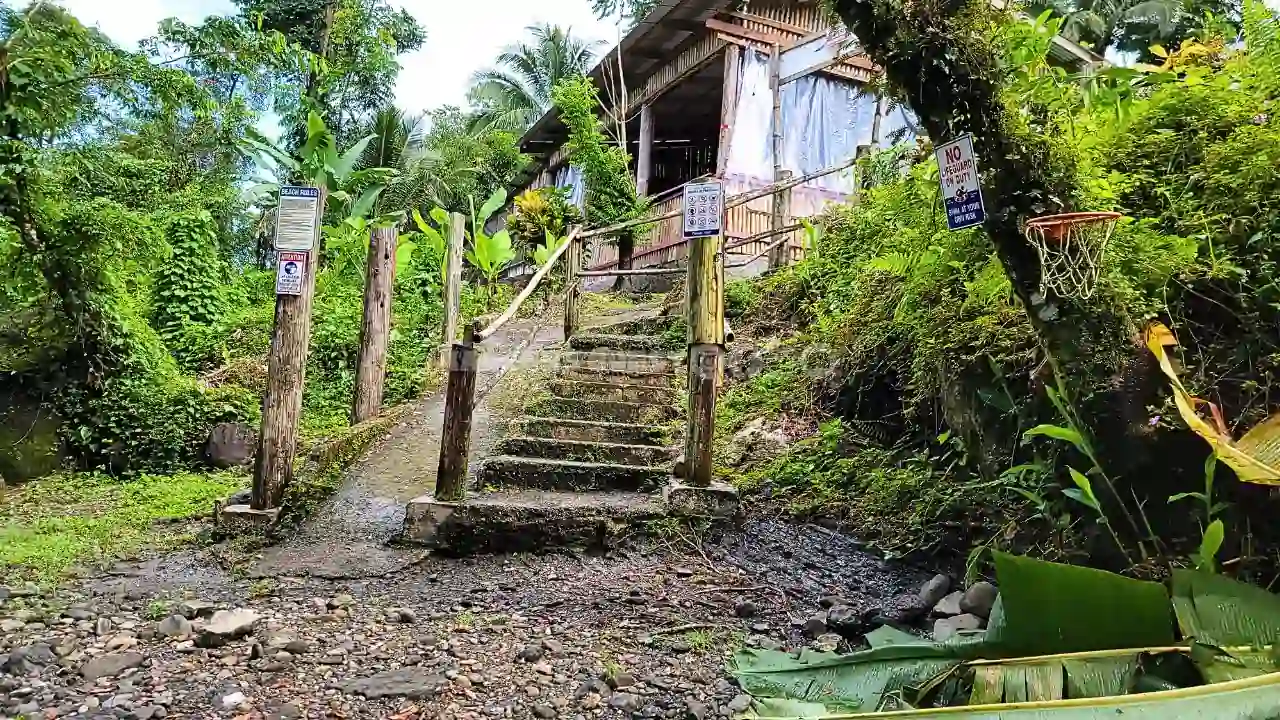

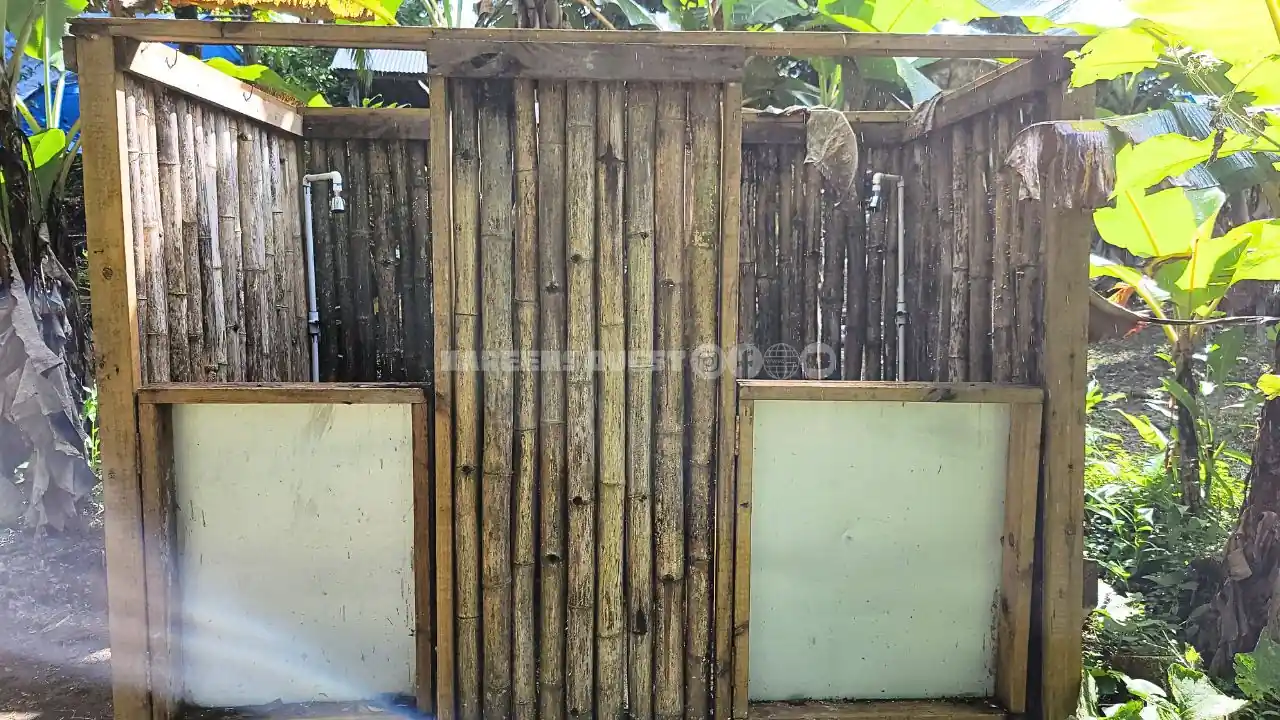

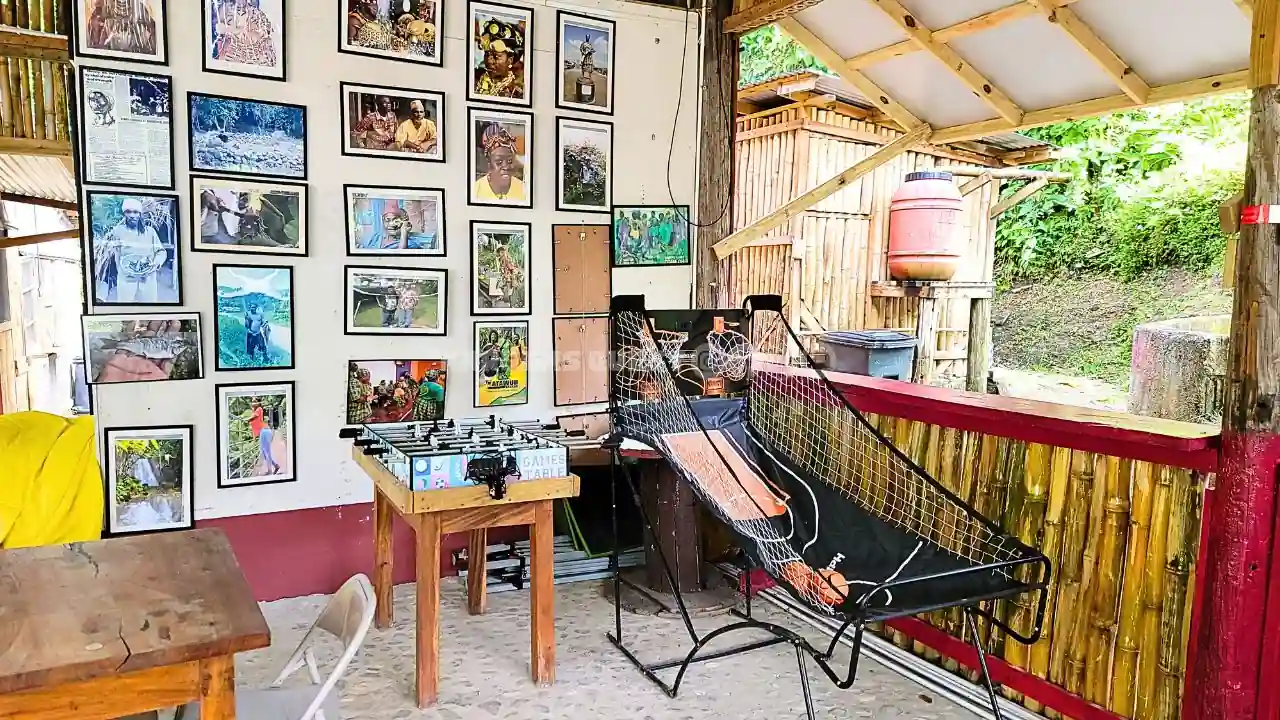
Quick Facts
Who is it for: Adventurers, Nature Lovers
What it is NOT: A luxury resort, a party hub, a place for those who dislike nature or simple living.
Tip: Embrace the local community interactions. The true essence of Katawud lies beyond the physical structures.
What stands out: The deep connection to Maroon history and culture, the riverside setting, the emphasis on local cuisine, and the tranquil, immersive natural environment.
What to carry: Insect repellent, comfortable walking shoes, swimwear, sun protection, a reusable water bottle, an open mind for cultural immersion, and a good camera.
Must try food: Cacoon Rundown, any dish prepared with janga, wild hog, or tun cornmeal.
What is it similar to: Ambassabeth Eco Lodge and Holywell
Location: Ginger House, Portland, Jamaica (nestled in the hills alongside the Rio Grande river).
The journey itself was a pleasant surprise. The quality of the roads, smooth straight through to Comfort Castle, was truly commendable. On the outskirts of Katawud, a colourful sign on a pole, clearly labelled with all the necessary information, greeted me. A long driveway, adorned with six-foot-high croton plants serving as natural walls, led me further in. It’s a one-way path, with ample space for a U-turn at the drop-off point. On the day of my arrival, the air was filled with the scent of fresh-cut lumber – men were busy constructing a gazebo right next to the river, an ode to the continuous evolution of this natural sanctuary.

I walked down a series of stairs to reach the main property, noticing the thoughtful design that made it wheelchair accessible. To my right, a spacious gathering area beckoned, perfect for dining, social events, and complete with a bar and kitchen. This is nature, raw and authentic, so don’t be surprised to find a frog or two sharing the space, especially at nights. Continuing further right, I discovered dedicated camping in Jamaica spots, some already set up with tents and inviting seating areas. Along the river, various spots offered tranquil seating, and at the centre, a communal shower area crafted from bamboo stood as a symbol of sustainable living. On the other side of the village, a small studio room offered a more private escape, complete with an indoor bathroom, albeit a compact one. There’s even a small kiddies area, making Katawud a place for families to connect with nature.
A Taste of History: The Flavours of Katawud
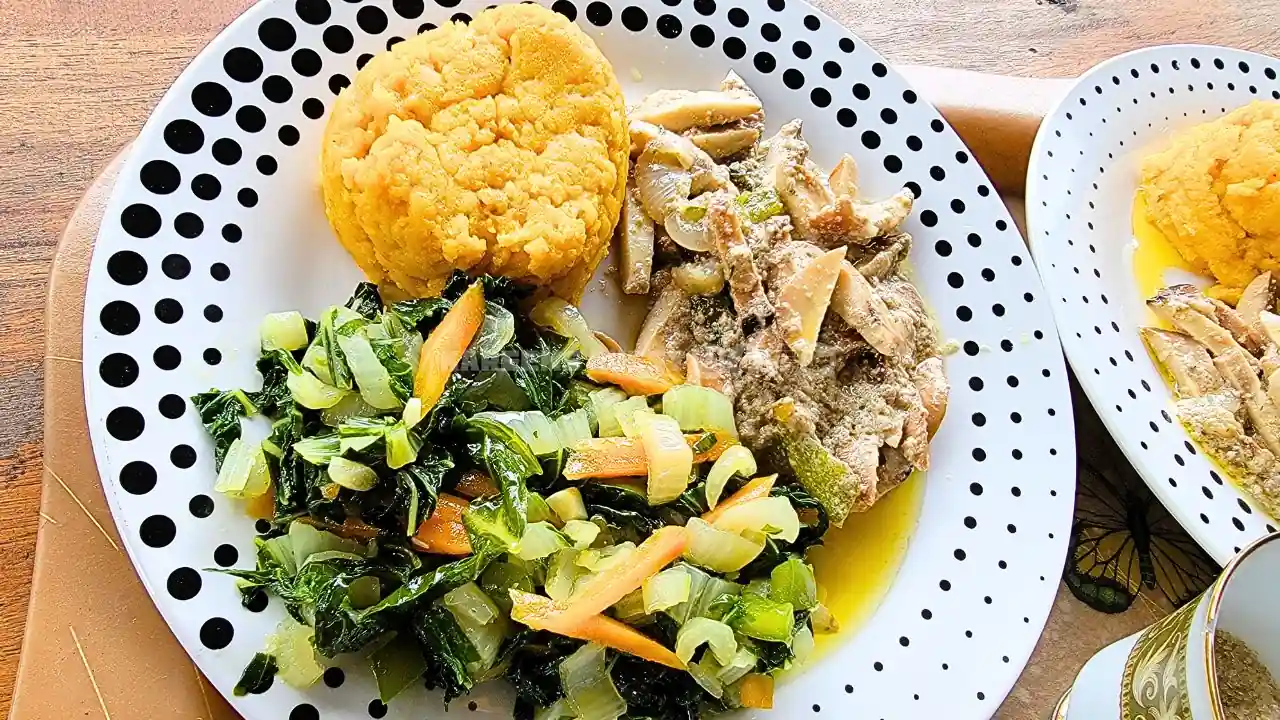
The cuisine at Katawud Village is, without a doubt, one of its greatest highlights. Chef Ingrid, at the helm, orchestrates a culinary experience that is both unique and deeply rooted in tradition. She prepared a dish that left an indelible mark on my palate: the cacoon, cooked down in coconut milk in a local manner called ‘Rundown,’ served with callaloo and ‘tun cornmeal’ mixed with pumpkin. The earthy sweetness of the cacoon, coupled with the richness of the coconut milk, was a revelation. It was a taste of ancestral wisdom, a flavour passed down through generations.
Between a leisurely lunch and an eagerly anticipated dinner, I ventured out to explore the neighbouring communities and monuments. I crossed the famous bridge connecting Cornwall Barracks to Ginger House, a structure that has witnessed countless journeys.
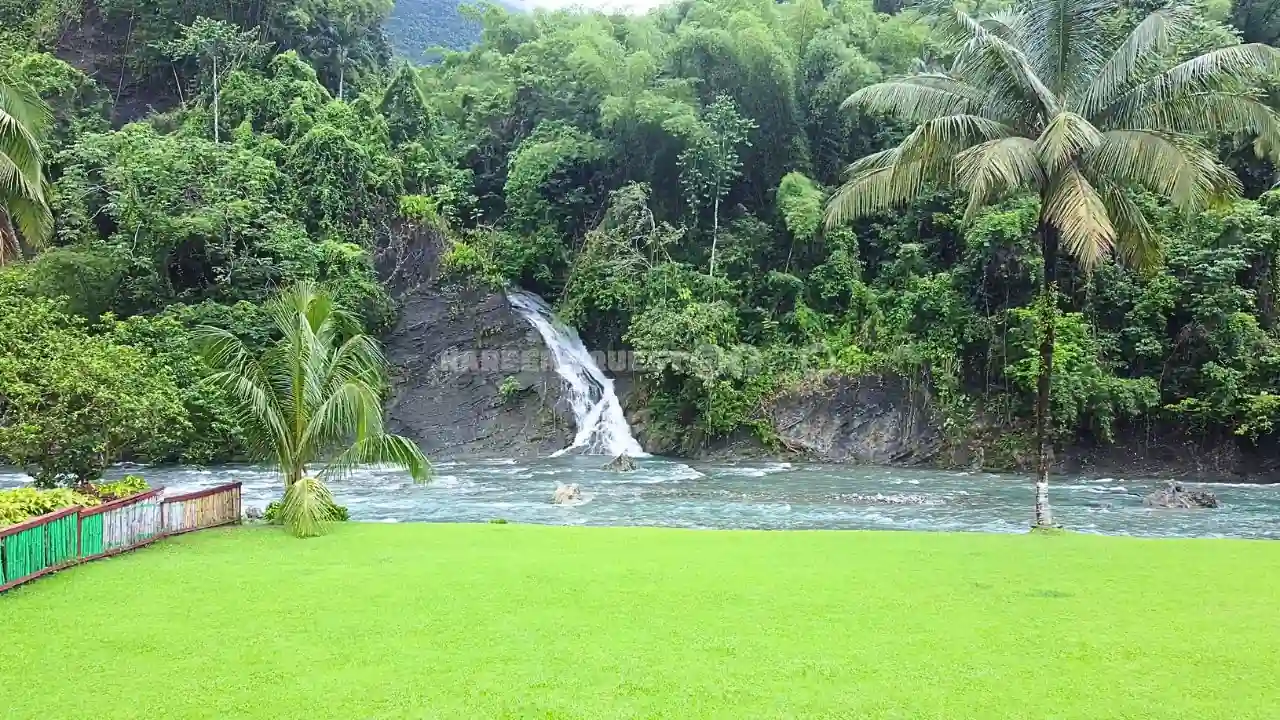
Up the road, in Comfort Castle, I encountered the most breathtaking lawn I have ever seen, stretching out like a verdant carpet. Parallel to it, a waterfall cascaded gracefully, its waters feeding directly into the Rio Grande. This is a scene of everyday life – a place where on Saturdays, you might see people washing clothes in the river, or children attempting to catch janga, the freshwater shrimp. Farmers can be seen walking with their harvest balanced on their heads, machete in hand. I observed one farmer, a picture of quiet determination, pulling his donkey, who, for a moment, refused to budge. Eventually, the farmer went on his merry way home, and about ten minutes later, the donkey, wicker baskets laden on both sides, found his own way back, no assistance needed. It was a simple, profound moment, encapsulating the gentle independence of these hills.
The Vision Behind Katawud: A Conversation with Dr. Fuller
To truly understand the essence of Katawud Village, I knew I needed to speak with the man behind it all, Dr. Fuller.
“Dr. Fuller, Katawud seems like such a unique offering in Portland,” I began, eager to hear his story. “Could you share what inspired you to create this rustic villa experience, particularly in your home community of Ginger House?”
Though a professor he remained down-to-earth in his reply, “maroon territories are quite unique as they are in remote areas with beautiful flora and fauna. Most importantly this is the community that I grew up in, so now I’m in a position to also create employment, which is a great feeling.” His words carried a quiet pride, a sense of purpose beyond mere commerce.
Knowing the deep historical roots of the area, I pressed on. “The connection to the Maroon communities is a significant aspect of Katawud. Can you elaborate on how this cultural heritage is integrated into the visitor experience? Perhaps through storytelling, interactions, or other elements?”
He responded, “this is a maroon owned enterprise in a maroon community so we get a chance to expose visitors to important places to the Maroons such as Moore Town, Rio Grande Valley and Nanny Falls. So Maroon culture and history forms the bedrock of Katawud village.” It was clear this wasn’t just a business, but a living homage.
My mind, still reeling from the flavours of lunch, naturally turned to the culinary delights. “The mention of cultural meals like wild hog, cacoon, and ‘tun cornmeal’ has my mouth watering! Could you tell us more about the culinary aspect of a stay at Katawud? Are these traditional recipes passed down through generations?”
He chuckled, a warm, genuine sound. “The cuisine here is a big mixture of the Tainos, Africans and the Maroons. For example the history of Jerk was started by the Maroons. For this reason we are always trying to serve our clients unique food like wild hog, wild deer, Janga, dasheen leaf or bussu.” He spoke of the food not just as sustenance, but as a direct link to the island’s multifaceted past.
As the sun began its slow descent, a gentle breeze rustled through the leaves, carrying the distant flow of the Rio Grande. Katawud Village isn’t just a place to pitch a tent; it’s an invitation to step into a living narrative. It’s the whisper of ancestral spirits in the rustling bamboo, the flavour of history in every bite of cacoon, and the genuine warmth of a community sharing its essence. Here, under the vast Jamaican sky, nature and heritage converge, offering a profound sense of peace and a deeper understanding of what it truly means to be free. It’s a place where every dawn promises a renewed connection, and every sunset leaves you with a quiet appreciation for the authentic beauty of community tourism and nature living.
How long does it take to get to Katawud Village, from these central points:
- Kingston (Norman Manley International Airport): 3 hrs, 10 mins
- Montego Bay (Sangster’s International Airport): 4 hrs, 8 mins
- Ocho Rios: 2 hrs, 36 mins
- Negril: 5 hrs, 37 mins
Video Review of Katawud Village
Create your own adventure

Craving your own Jamaican escape? Head over to our TOUR PAGE to connect with Kareem’s Quest! We can help you plan your itinerary, find the perfect hotels and adventures, and ensure you experience the authentic side of Jamaica. Get ready to fall in love with Jamaica, mon!
Follow Kareem’s Quest
Useful Information about Jamaica
Click to check Jamaica’s Foreign Exchange Rate.
What is the weather like in Jamaica
The climate in Jamaica is very warm, with an annual average of 32 degrees/ 89.6°F. It is usually warm to hot all year round.
What is the time zone in Jamaica
Eastern Standard Time (GMT-5)
Immigration/ Custom Form
Every visitor is required to fill out a C5 form before entering Jamaica
Do you want more Kareem’s Quest content?
To read the latest Kareem’s Quest STORIES, click this link, then click the star button.

